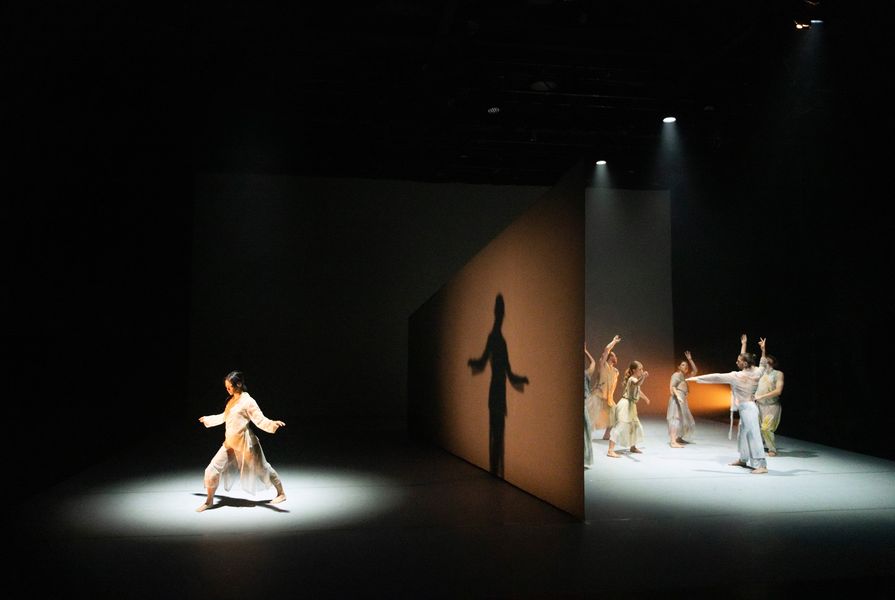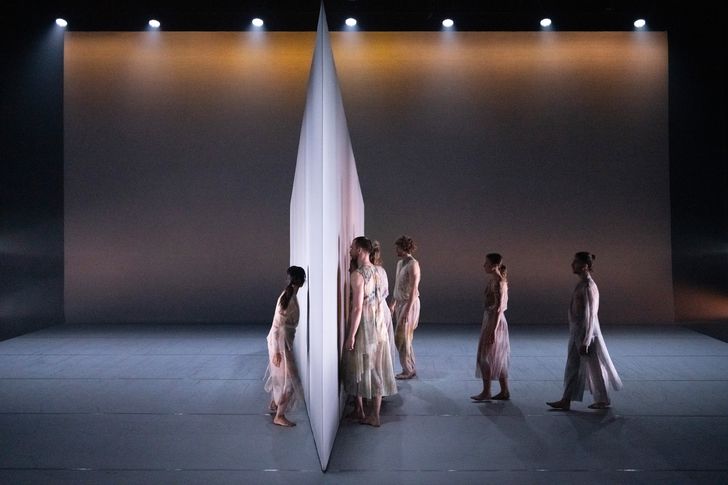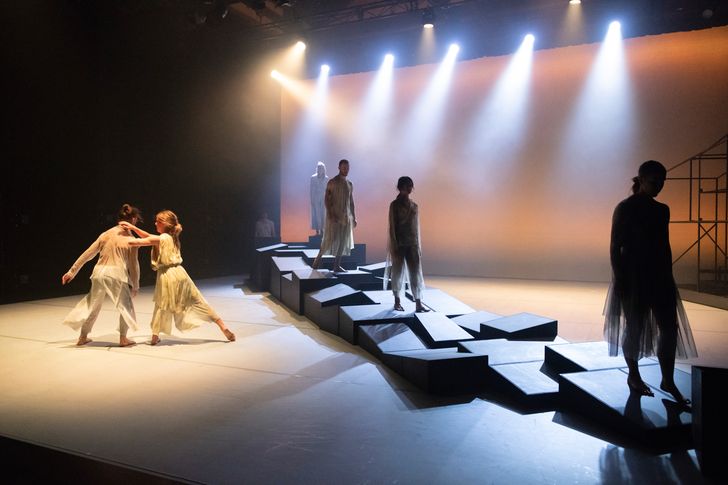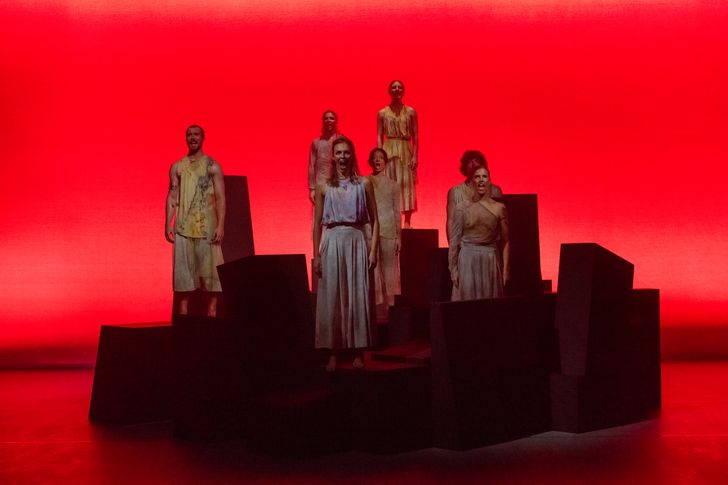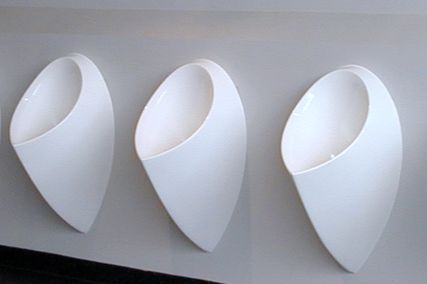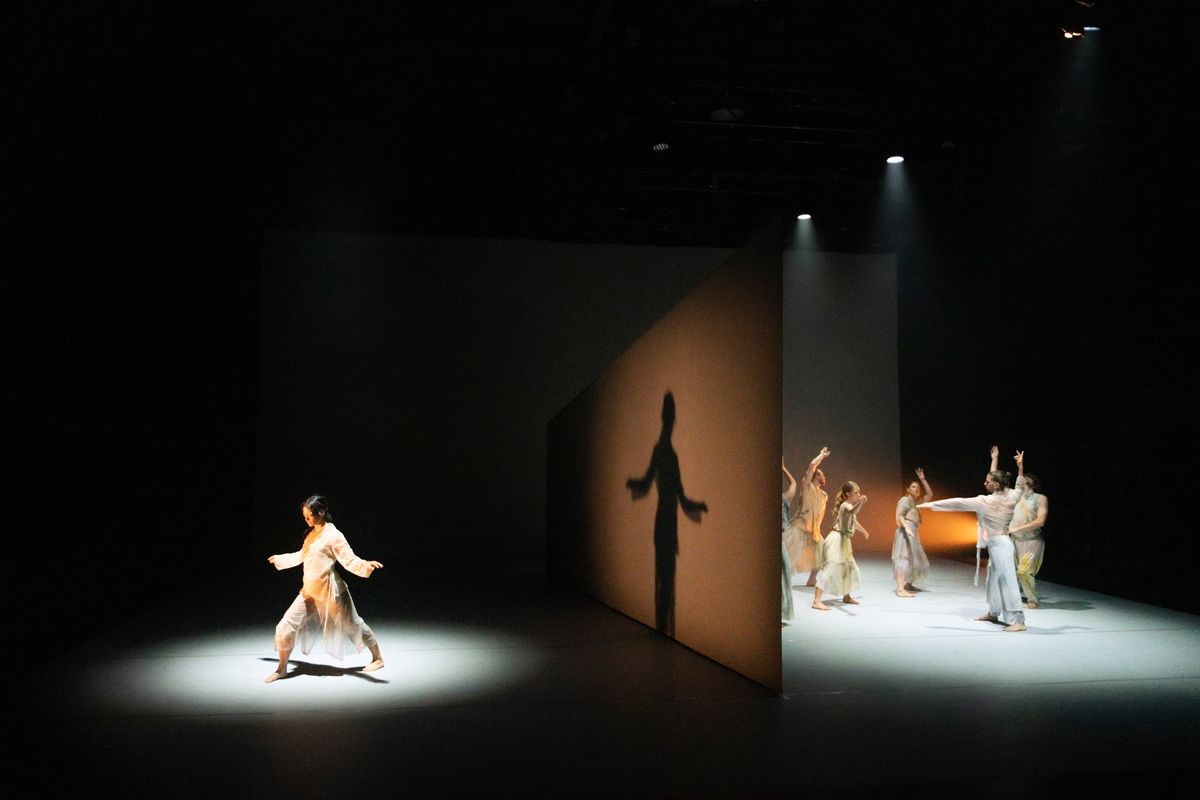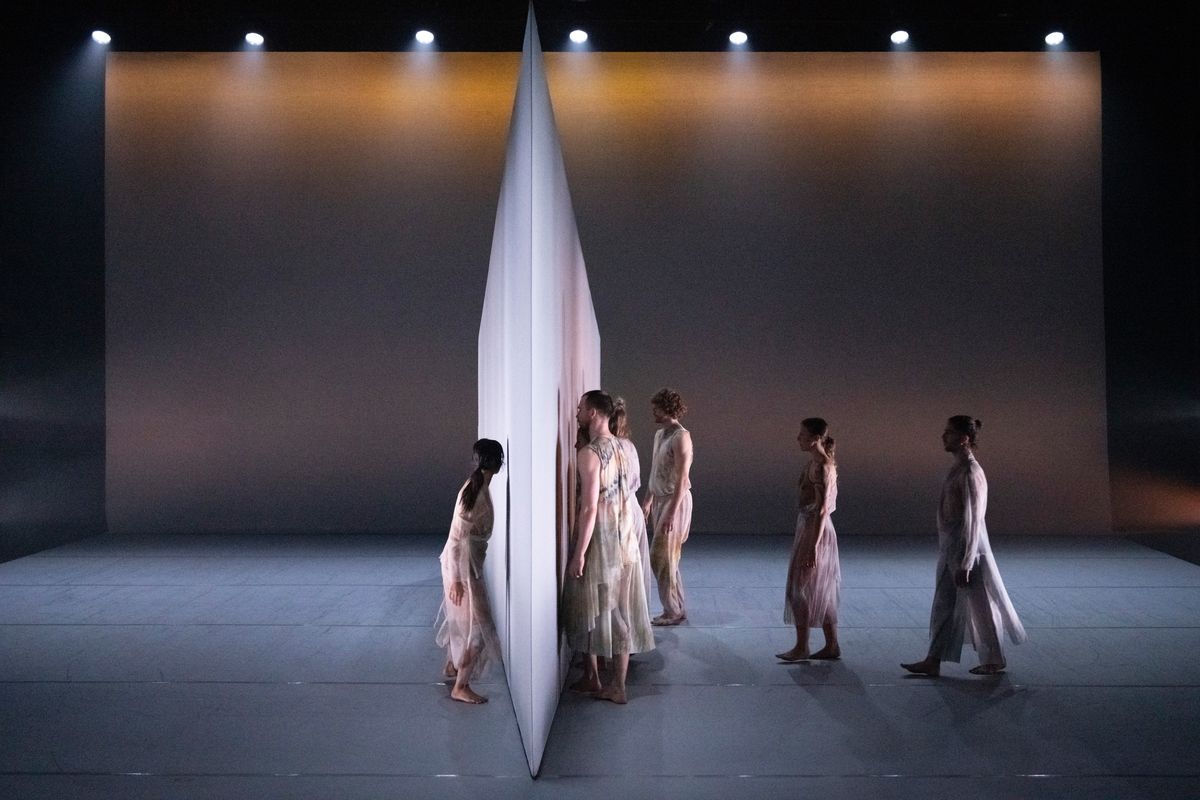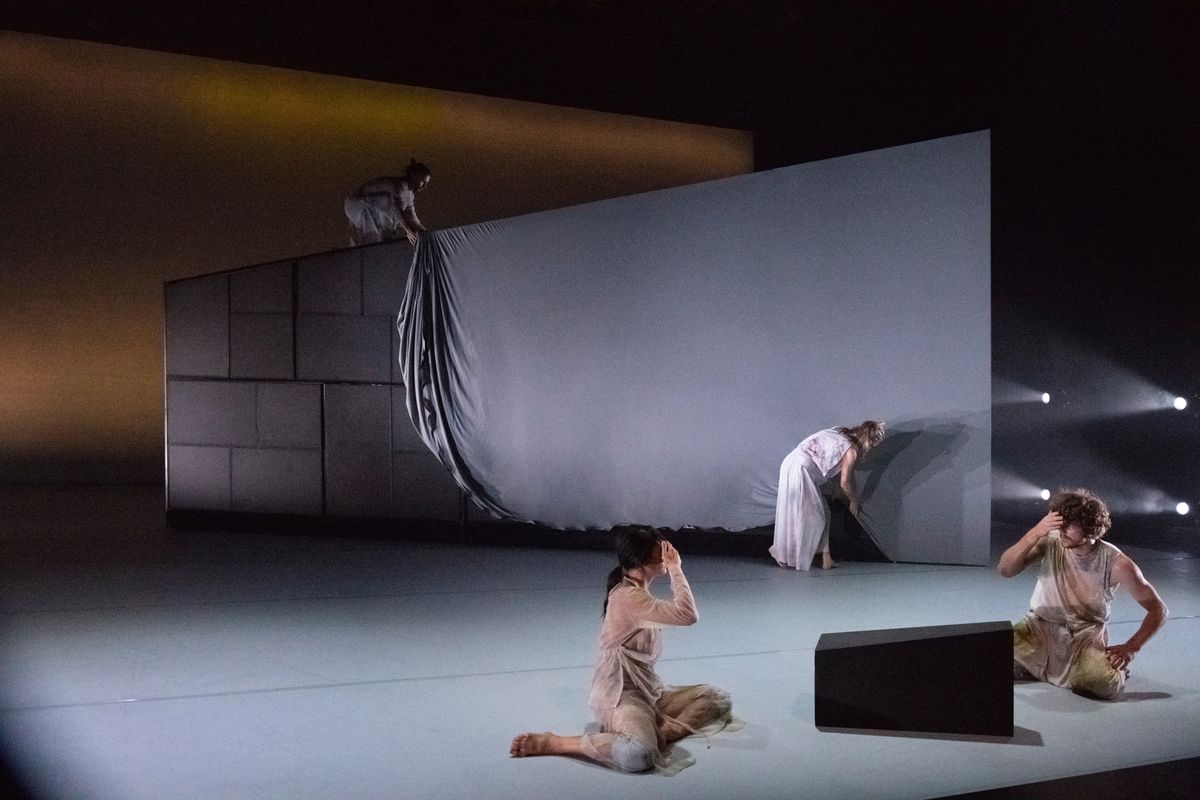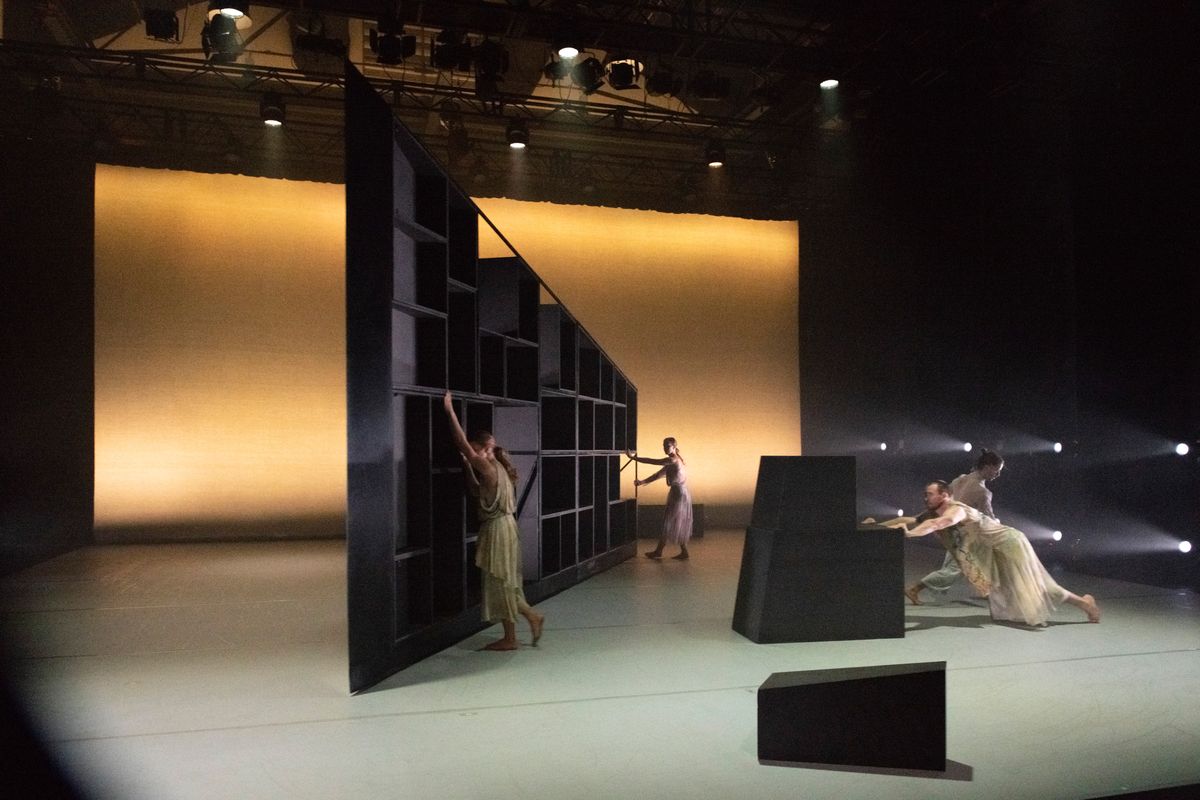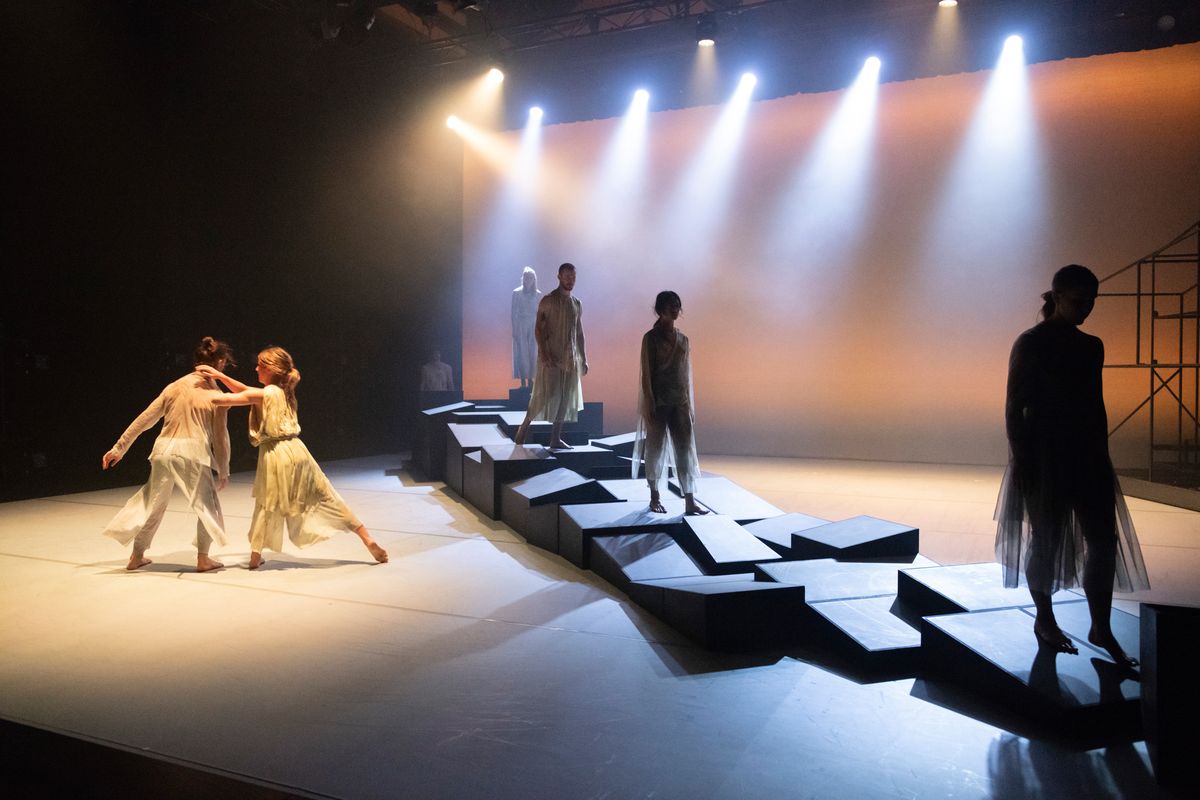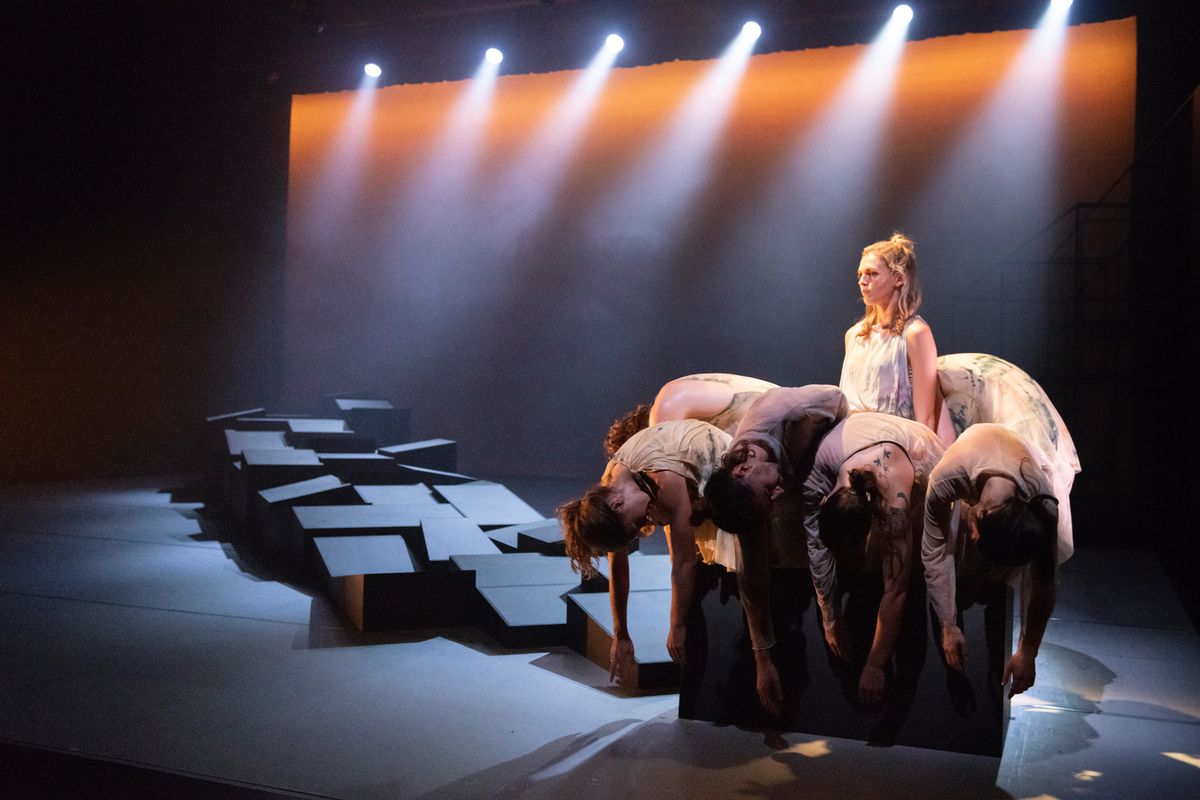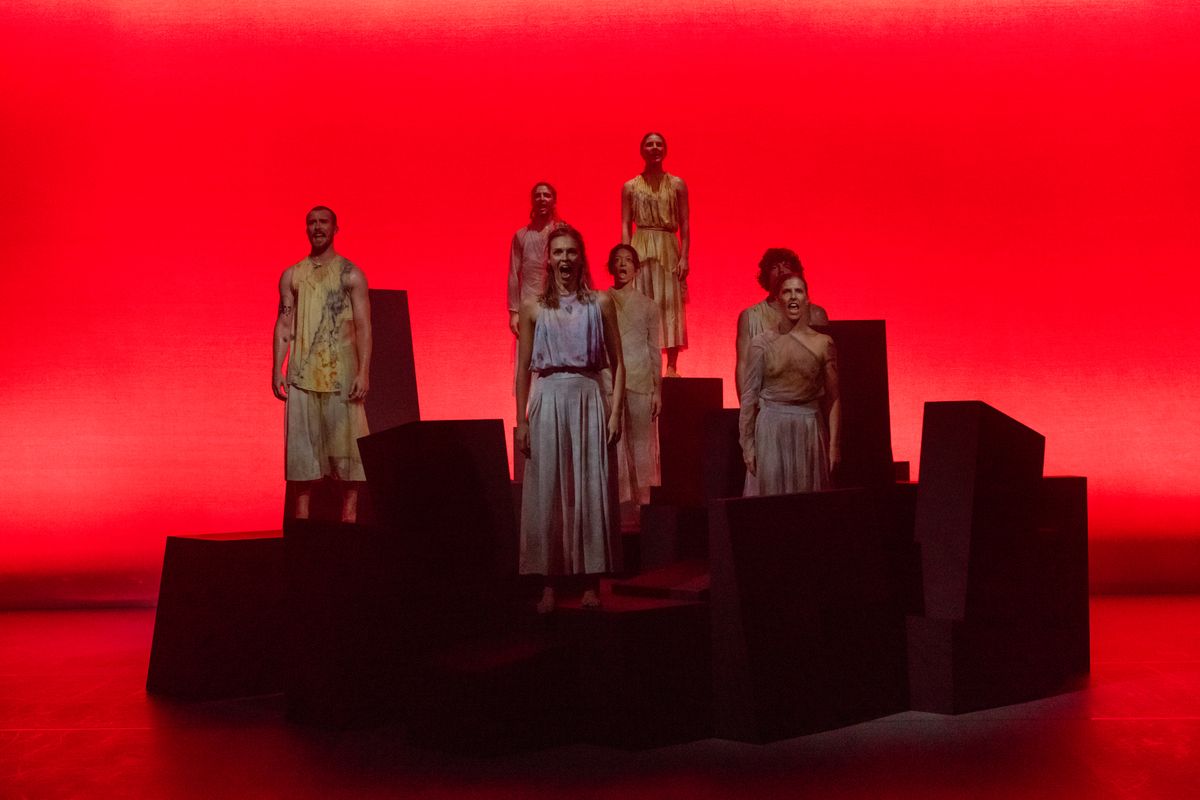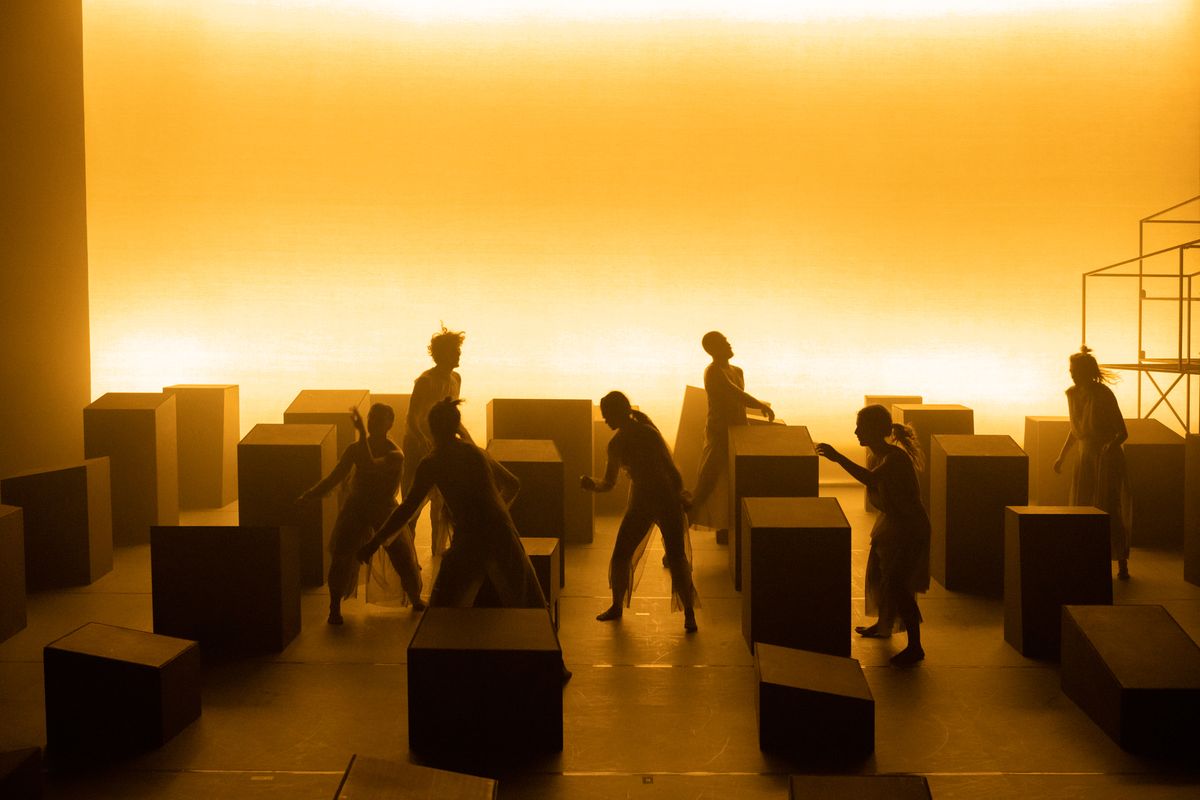A wall is an architecture of exclusion, division, restriction and segregation, and it is the stage setting that the contemporary dance Dust by Dancenorth opens with. A monolithic wedge-shaped wall slices the stage in two, creating a barrier between the seven dancers – one to house left, and six to house right. The wall not only divides the dancers, but it partially and sometimes wholly obscures the audience’s view, manipulating their perspective depending on where audience members sit in the theatre. But perspective is often what contemporary dance is about. Its abstract movement conveys recognizable themes and emotions, while also allowing for ambiguity in the interpretation of the work. Indeed, it leaves room for the audience to read the performance through their own perspective and layer it with their own meaning.
While monolithic walls are often permanent and solid, the wall in Dust is an adjustable installation. Over the course of the performance it is deconstructed into components that are arranged and rearranged to create different spatial formations. With these new and evolving foundations, the divisive architecture of the wall is transformed into one of equality, inclusion and opportunity.
The wall creates a barrier between the dancers.
Image: Dianna Snape
Hobart-based architecture firm Liminal Studio created the stage design, working collaboratively with the artistic directors and dancers for the set and choreography to evolve hand in hand. Together they workshopped the themes of the performance – inheritance, us and them, the other, division and the conflict that barriers create – and then each party layered the themes with their own interpretation and perspective. Liminal Studio created an exploratory exercise for the dancers, using images of castles and sheep, and words such as “empathy” to evoke their response through movement. “We introduced this way of developing the creative process because we use our pens to respond to themes, but we wanted to see how the dancers use their bodies and movement to interpret the themes,” says Peta Heffernan, director of Liminal Studio.
Three requirements guided the set design: a monolithic wall that could pivot and be moved to separate or unite the dancers; a skin on the wall that peels back to reveal a deconstructable framework; and the ability to build a horizontal platform as a new foundation. The dancers then took this further by creating varied terrains with the modular components of the wall. The transformative design therefore not only provides the stage setting but is a prop that the dancers use to continuously alter their space and communicate the themes of the performance.
The dancers create various terrains with the modular components of the wall.
Image: Dianna Snape
Having inherited the monumental wall that divides the stage, the dancers peel back a lycra skin to reveal its modular construction – a Tetris-like composition of hollow boxes that fit within the metal framework. The boxes have a splayed form to create the diminishing perspective of the wedge-shaped wall and are sized to neatly fit within each other for storage and transportation. Each box is made with sixteen-millimetre-thick MDF, and while the dancers appear to move them effortlessly, they are not lightweight. The frame of the wall is designed to be sturdy and rigid when the boxes are taken out. It has an anchor that the dancers raise and lower to swivel the wall, and the structure comes apart with a quick-release mechanism.
The wall slowly disappears as the dancers remove the boxes from the frame and create new spatial formations that serve as foundations for the choreography. In one formation, the seven dancers move together within the restricted space of one box. In another formation, six dancers move almost hypnotically in front of a castle-like landscape, as if collectively controlled by the seventh dancer, their leader. But as is the premise of contemporary dance, this is just one interpretation and it is up to the audience member to draw their own meaning based on personal experience and viewpoint.
The dances mouth wordlessly atop a formation created by the boxes.
In the final scene of Dust, the boxes are arranged individually in a grid-like formation across the stage, creating a setting that is accessible, equal, egalitarian. It’s an architecture that represents opportunity and inclusion – an evolved perspective from the original architecture of restriction and exclusion. “It reimagines and reinvents what has been inherited,” says Heffernan.“It’s dematerializing the barrier that sets people apart and creating platforms to bring people together, and pathways to a positive future.”
Dancenorth performed Dust at Brisbane Festival in September 2018 and at Sydney Festival in January 2019 and is touring nationally and internationally.

